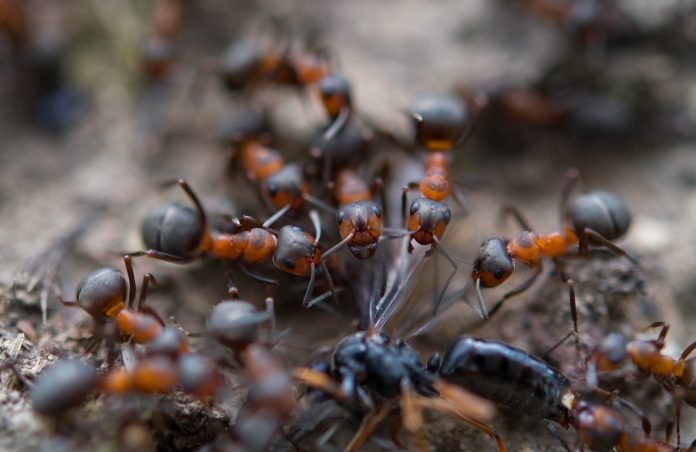Flying ants are just normal ants with wings. They do not cause any damage and are generally considered harmless. However, it can be annoying if you find them in large numbers inside your home. But don’t despair – there are steps you can take to prevent flying ants from becoming part of your home and ways to get rid of them if necessary.
What are flying ants?
Flying ants are also called alates. It is commonly mistaken as flying termites, but unlike termites, they have bent antennae and pinched waist, and their wings are unequal. Winged ants are just sexually mature ants. When a colony of ants is ready to expand, reproductive called alates burst from the nest with their wings spread wide.
When Do flying ants occur?
Flying ants have a unique appearance and life cycle separate from regular ants. After the flying ant has mated, they lose its wings and begin to forage for food. Their short lifespan means flying ants only appear in large numbers once a year. Although flying ant day is more a popularly termed phenomenon, flying ant swarms usually occur throughout the summer months, especially after warm, rainy weather. The moisture in the air triggers them to reproduce and swarm from their nests. This is why they are more commonly seen flying around lights at night when it’s warmer outside.
Do all ants have wings?
No, not all ants have wings. In fact, Pestcom Pest control claimed that only 8 % of ants species have wings. Winged ants or alates are the reproductive ant species of a particular colony. Typically winged ants’ main goal is to emerge from the nest in large numbers and fly away to begin new colonies.
How do you get rid of flying ants?
Flying ants have the potential to become a nuisance if they become too crowded. To get rid of flying ants, it is important to first identify where they are coming from and try to eliminate as many from their nesting spot as possible.
One way to do this is by using ant baits. Ant baits contain a food source that lures the ants back to their nest, where they can carry the bait back and share it with other colony members, thereby killing them off. Alternatively, you could use liquid insecticides or dust specks to target flying ants.
If you can’t determine the source of the flying ants, then you can use a broad-spectrum insecticide to keep them away. For example, spraying insecticides around windows and doors can help prevent flying ants from entering your home. Sealing all crevices and cracks in walls or foundations with caulk or mortar will also help keep the flying ants away.
A natural repellent can also be used to get rid of flying ants. Ant-repellent plants like peppermint, lemongrass, lavender, and citronella can help repel these insects. Putting these plants near entry points like windows and doors can help to keep flying ants away.
Light is also a major fact that attracts flying ants. So, reducing the amount of light near your house will also help to keep them away from your place.
Finally, ensuring food sources are not left out in the open or accessible to ants is another way to prevent an infestation. Keeping counters and floors clean and wiping up spills promptly will help to keep the flying ants away.
Conclusion:
Flying ants are just regular ants with wings and do not cause any harm in small numbers. However, if they become too plentiful, they can be annoying. The key to getting rid of flying ants is to identify their source and use ant bait, insecticides, or natural repellents to get rid of them. Additionally, preventing an infestation by keeping food sources away and reducing light around your home can also help to keep flying ants away. With these strategies, you can successfully eliminate flying ants if necessary.



















